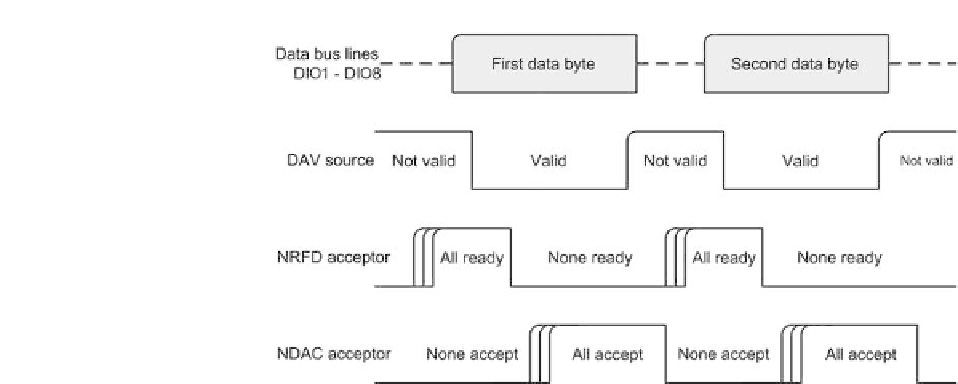Hardware Reference
In-Depth Information
Figure 8.4
IEEE-488 handshake sequence
the data. Finally, the talker asserts DAV to indicate that the data on the bus is
valid. Figure 8.4 illustrates this sequence of events.
Service requests
The service request (SRQ) line is asserted whenever a device wishes to attract
the attention of the active controller. SRQ essentially behaves as a shared inter-
rupt line since all devices have common access to it. In order to determine
which device has generated a service request, it is necessary for the controller
to carry out a poll of the devices present. The polling process may be carried
out either serially or in parallel.
In the case of serial polling, each device will respond to the controller by
placing a status byte on the bus. DIO7 will be set if the device in question is
requesting service, otherwise this data bit will be reset. The active controller
continues to poll each device present in order to determine which one has
generated the service request. The remaining bits within the status byte are
used to indicate the status of a device and, once the controller has located the
device that requires service, it is a fairly simple matter to determine its status
and instigate the appropriate action.
In the case of parallel polling, each device asserts an individual data line. The
controller can thus very quickly determine which device requires attention.
The controller cannot, however, at the same time ascertain the status of the
device that has generated the service request. In some cases it will therefore be
necessary to carry out a subsequent serial poll of the same device in order to
determine its status.
Multi-line commands
The controller sends multi-line commands over the bus as data bytes with ATN
asserted. Multi-line commands are divided into five groups, as in the table
below. Figure 8.5 summarizes the IEEE-488 command codes.

